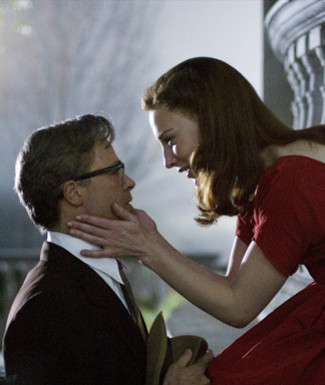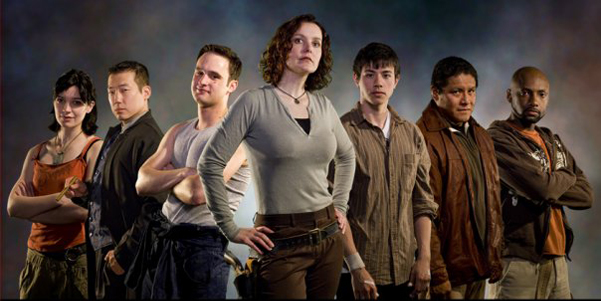Entries Tagged 'software' ↓
October 6th, 2010 — baltimore, business, design, economics, geography, socialdevcamp, software, travel, trends
Occasionally we here in the burgeoning tech community in Baltimore have paused to take stock about how far we’ve come, and what would be good to do next. About a year ago, Mike Subelsky made some suggestions on the BaltTech blog, and he’s recently identified some awesome emerging leaders who have made a real difference in the last year. Many of the ideas he identified are ones that people have taken up and run with.
In my travels in the last year, I’ve come across several ideas that are working in other places that we should consider pursuing here – in no particular order.
- Startup Weekend – Bring together a bunch of startup-minded people on a Friday, form groups, and build something entirely new from scratch by Sunday. Demo it on Sunday afternoon. I had the chance to attend StartupWeekend Seoul this summer and it was a great experience. Lots of relationships were formed and some truly great ideas were unearthed. We need a big-ish place where folks can hang out for 3 days straight and someone to take the lead.
- Girls In Tech – This organization is a global group of women who are making a real difference in the tech community. Some have griped about the name, and I agree it’s somewhat problematic – however to their credit they are trying to do their best to attract young women involved in tech and create a culture that is at least somewhat fun and edgy. Behind the scenes, its founders and main movers and shakers are some of the most intelligent and connected emerging women leaders in the tech world; with strong leaders in China, New York, and San Francisco. I promise you that a Girls In Tech Baltimore chapter would find good connections worldwide.
- Founder Dating / Find-a-Cofounder – These events have been popping up in San Francisco, Seattle, and New York in various forms. The idea here is that if you can bring together a ton of people who all have a clear intent to want to form a startup – if they can find good partners to work with – maybe something will come of it. This seems like a great way to unearth “startup-curious” folks in boring jobs and pair them up with ambitious entrepreneurs who just need a strong partner. And every other combination. Worth doing. (And it looks like a meeting may be happening next week to start the conversation!)
- Hacks and Hackers – Baltimore has the critical mass to support a chapter of this group that aims to connect journalists and tech/developer people. And entrepreneurs. News here is horribly broken and it’s going to take an entrepreneurial mindset to fix it. The sooner we can get journalists and smart startup people to get to know each other better, the sooner a new model will be discovered. Get on it.
- TEDxBaltimore – I helped pull together TEDxMidAtlantic in 2009 and 2010, and TEDxOilSpill this summer. TEDxMidAtlantic aims to throw a spotlight on a wide range of creative thinkers in and around our entire region. Mel Brennan from YMCA of Central Maryland and Open Society Institute have been discussing a potential collaboration to help produce TEDxBaltimore, which would have the opportunity to focus on Baltimore and its future potential. I strongly support this and anyone who would like to step up will find support from YMCA, OSI, and TEDxMidAtlantic. Contrary to some recent tweets, no date has been set.
- Entrepreneurs Unplugged – This event in Philadelphia features an entrepreneur on stage to discuss their story, successes, and failures. As long as they can keep from lying on stage I think this could be an extraordinarily powerful format. GBTC has had a Face2Face program for several years, which avoids the tendency that entrepreneurs have to whitewash over failings and details by pulling together a very small group over dinner. Both are awesome.
- Reverse VC Pitch Party – My friends Larry Chiang and Dave McClure have been dreaming this one up, so VC’s can do “outreach and education and stimulate deal flow.” I think it’s a great idea and I’d love to see groups like my own Baltimore Angels as well as some of the VC firms in the region get up on stage and talk about the deals they like to see, the reasons startups should seek them out, etc. A great way to turn the tables and share perspectives that are all too often misunderstood.
- CityCamp – In the spirit of BarCamp and SocialDevCamp (both of which could use folks to take the charge for updated events – we’ll all help!), CityCamp is a catalyst and a forum for talking about what’s working and what still needs to be done from an Open Government / Gov 2.0 standpoint. It’s what Baltimore City’s well-intentioned “Data Day” this summer perhaps should have been. There’s a lot of potential for involving folks from the design, architecture, and foundation community here too.
- Junto & Salons – Ben Franklin convened a regular gathering of smart folks in Philadelphia, many much older than himself, to discuss ideas of the day and to trade notes about what businesses had gone bankrupt and the like; he called it a Junto. Lately I’ve noticed an increasing number of evening salon conversations about politics, startups, tech and the like. Our friends in Philadelphia revived the Junto tradition a couple of years ago, with awesome results. We’ve discussed doing it here but it hasn’t happened yet. Are you the charismatic leader?
- Bootstrap Baltimore / Mosh Pit 2.0 – For the last two years Jared Goralnick has put together Bootstrap Maryland at University of Maryland’s College Park campus. This is a great event, and we could use something here in Baltimore that is aimed at drawing out the amazing quantity of entrepreneurial talent here in Baltimore’s many universities. A few years ago, GBTC hosted an event called MoshPit – a business plan competition for college students. We need to revive this program and meld it with something like Bootstrap. And we especially need to reach out to students in engineering, science, and the arts – not just business students.
Go ahead and steal these ideas. There are plenty more where these came from. Borrowing working ideas from other places means they have a much higher chance of success than trying to design a totally new event format from scratch. Plus, it gives the potential for direct exchange with organizers elsewhere.
If you are interested in pursuing any of these ideas, ping me – I can put you in touch with the originators of these events. And thanks again to everyone who has stepped up to make a real difference here. We are changing this city one mind at a time.
October 4th, 2010 — business, design, economics, software
Today Twitter CEO Evan Williams announced he would be stepping down as Twitter’s CEO. Dick Costolo, presently the firm’s COO, will take over that role.
As is its custom, Twitter (the site) exploded with the news, as geeks everywhere speculated, double rainbow-like, What does it mean?
The answer is that they’re simply tending to their business. The myth that founders somehow have mythical vision and deserve important sounding titles like CEO is really mostly garbage. Founders are mostly like everyone else, except for one important difference.
Founders try things. They seek new markets and ideas where others don’t. But they seldom have all the answers. Sometimes they are even visionary, but that doesn’t always make a good CEO from a day-to-day build-the-business standpoint.
Fact: Twitter was not Evan Williams’ idea. It was Jack Dorsey’s idea. And in fact Jack was CEO of the company from 2007 til late 2008 when Williams, a co-founder and early funder of Obvious Corp, took over. (Jack, a great guy and a big dreamer, went on to found Square.)
Fact: No one at Twitter had any idea where it might go when it was created. Seriously – neither Dorsey nor Williams predicted this outcome. I’ve talked to them both about it and the fact is they were just regular guys who tried something new. They had enough resources and drive to make sure it could grow, but they really had no idea where it might lead.
The whole idea that folks like Evan Williams, Jack Dorsey, Biz Stone, Mark Zuckerberg, or Kevin Rose are well-suited to actually run the businesses they have created is pretty much a myth. But yet it’s one people seem to like to believe.
Founders have a very different personality from the sort of person required to build, operate, and grow a business financially. The sooner we can all get over the celebrity CEO complex, the better off we’ll all be.
People need to understand exactly what it takes to found a startup, and Eric Ries has gone so far to say that entrepreneurs actively lie to promote the visionary founder myth – and I agree with him.
Costolo is a genius at building a new-media business like Twitter. Williams is a persistent guy who’s willing to break new ground.
Two. Different. People.
September 18th, 2010 — baltimore, business, design, economics, software, trends
Yesterday I had a conversation with someone who wanted to establish a substantial private investment seed-stage fund in Baltimore. Combined with the efforts of several groups, including Baltimore Angels and the new proposed Invest Maryland $100M fund, I remarked that there might suddenly be a glut of available funding for companies!
What would this mean? Some have said that the mid-atlantic region has suffered from a shortage of startup funding; that angels are too few and far between, and that large investors and VC firms are “risk averse.”
I don’t think this is a) the real issue, or b) especially true. Companies that have shown strong growth have had no problem securing the funding they need. I’m thinking of Sourcefire, Advertising.com, BillMeLater, Under Armour, and plenty of others.
But this does not mean that a perceived surplus of funding would be a bad thing. If a perceived availability of capital caused an influx of folks looking to engage in entrepreneurship, more entrepreneurial efforts would form. If more people were confident that they could grow a new business when they meet with success, then they would be more inclined to get to that point.
Most entrepreneurial endeavors really don’t need much in the way of funding; the best companies start when people throw their lots together to work on things they care about. Often, young people do best at this because their cost of living is lowest.
So, since “funding” is actually the last thing that most startups actually need, how would the psyche of potential startup entrepreneurs be affected if lots of funding was obviously and ostensibly available?
I think it would help, but not because people are taking advantage of the access to funding. It would help because it would lessen fear around entrepreneurship and convince more people that it was a “normal” path to pursue. So, let’s bring it on. Prepare for a glut of startup funding in Baltimore. It’s coming, and you don’t even especially need it.
What would you start working on today, knowing that there’s plenty of funding coming for ideas that show promise?
August 1st, 2010 — art, baltimore, business, design, economics, geography, philosophy, politics, software, trends

Putty Hill, a film by Matthew Porterfield (2010)
Something amazing is happening in the world of filmmaking. Crowdsourced funding mechanisms like Kickstarter.com are enabling a new generation of filmmakers to get a foothold doing what they love, where they want to do it. They’re using social media to find acting talent, and new digital camera technologies are making it possible to create amazing high quality films for a fraction of what it used to cost.

Matthew Porterfield
I’m particularly impressed by the work of Baltimore filmmaker Matthew Porterfield, whose films “Hamilton” (2006) and “Putty Hill” (2010) exemplify the new kind of “cinepreneurial” skillset which will certainly come to define 21st century filmmaking. (You can read here about the funding and creative process behind Putty Hill.)
Porterfield is a nice, unassuming guy who teaches film at Johns Hopkins and directs his students that if they want to make documentaries, they need to go to New York, and to go to Los Angeles for pretty much everything else. For today, this is sound advice. It’s the same kind of advice you’d give talented coders looking to unleash the next big web technology — go to San Francisco, because it’s where the industry is centered — at least right now.
But if you ask Porterfield why he doesn’t take his own advice, he’d likely offer a cryptic sort of answer — that he’d considered it but really couldn’t imagine himself anywhere else. I don’t know him well enough to speak for him, so I hope he weighs in here. But Matt and I are kindred spirits: we both are actively choosing place over anything else, and investing our time and talent to make it better.
Let’s Invest in Maryland Film, Not in Hollywood
Baltimore and Maryland have been the home to many well-known movie and television productions over the years, not the least of which have been Homicide: Life on the Street, The Wire, and a slew of Baltimore native Barry Levinson’s films including Diner, Tin Men, and Avalon. And most all of these productions received significant subsidies from the State of Maryland.
As budgets have continued to tighten, the O’Malley administration made a strategic decision to cut back on investment in film production subsidies. And that has probably been a very wise decision. Other states have been more than willing to outbid Maryland, offering ridiculous breaks. And Maryland really doesn’t need to be in yet another race to the bottom.

The Curious Case of Benjamin Button (2008)
The film The Curious Case of Benjamin Button (2008) was based on a short story by F. Scott Fitzgerald (who lived around the corner from me in Bolton Hill when he wrote it), and it was originally set in Baltimore (original text). Yet the film version was set in New Orleans and had a subtext about a dying woman retelling the story as Katrina bore down on the city. Why? Subsidies. New Orleans offered more subsidies than Maryland would. And so the story was changed and moved there. Who knows if the Katrina storyline was a condition in the contract!
I don’t really have an opinion about whether Benjamin Button should have been filmed in Baltimore, but I do have an opinion about engaging in zero-sum games with 49 other desperate states: it’s bad policy. And I also think the time has come to admit that big movie studios are the next big dinosaur to face extinction. Why should Sony or Disney or Universal make the bulk of the world’s content when every man, woman, and child has access to a $200 HD camera and a $999 post-production studio?
Investing in Cinepreneurs
John Waters is one of Baltimore’s great artistic assets. And it’s not because of film subsidies. His work is known worldwide, and it celebrates the quirky, distinctive voice of Baltimore. Matthew Porterfield is distinctive and quirky too, and he makes beautiful pictures: he’ll be next to make his mark. And there are dozens more teeming around places like MICA, the Creative Alliance CAMM Cage, Johns Hopkins, Towson University, and UMBC. We need only to nurture their talent and the ecosystem.

Browncoats: Redemption, 2010
Another film, Browncoats: Redemption was made locally last year and created by local entrepreneurs Michael Dougherty and Steven Fisher. It is utilizing an innovative non-profit funding model. The film’s is raising money for five charities and it leveraged social media and Internet to recruit 160+ volunteers and market the film.
Instead of blowing money on Hollywood productions that bring little more than short term contract and catering work to Maryland, why don’t we instead start investing in the artists in our own backyard? Just as IT startups have gotten much cheaper to jumpstart, it’s now possible to make films for anywhere from $50 to $150K. If we dedicate between $5M and $7M to matching funds raised via mechanisms like Kickstarter, we could make something like 150 to 300 feature length films here in Baltimore. This would unleash a new wave of creativity that would yield fruit for decades to come, and put Maryland on the map as a destination for filmmakers.
We already have great supporters of film in the Maryland Film Festival, Creative Alliance, and many other organizations. It wouldn’t take much to get this off the ground. Instead of going backwards to the 1980’s in our view towards film production (as former Governor Ehrlich has recently proposed), let’s take advantage of all the available tools in our arsenal to jumpstart the film industry and move it forward in Maryland.
For every new artistic voice we nurture, we’ll be building Maryland’s unique brand in a way that no one else can compete with. It will make an impression for decades. And investing in film and the arts will help the technology scene flourish as well. Intelligent creative professionals want to be together. And coders and graphic artists think film and filmmakers are pretty cool.
We shouldn’t let an aversion to the failed subsidy policies of the past get in the way of forging a new creative future that we all can benefit from. We can invest in the arts intelligently. Let’s start today.




